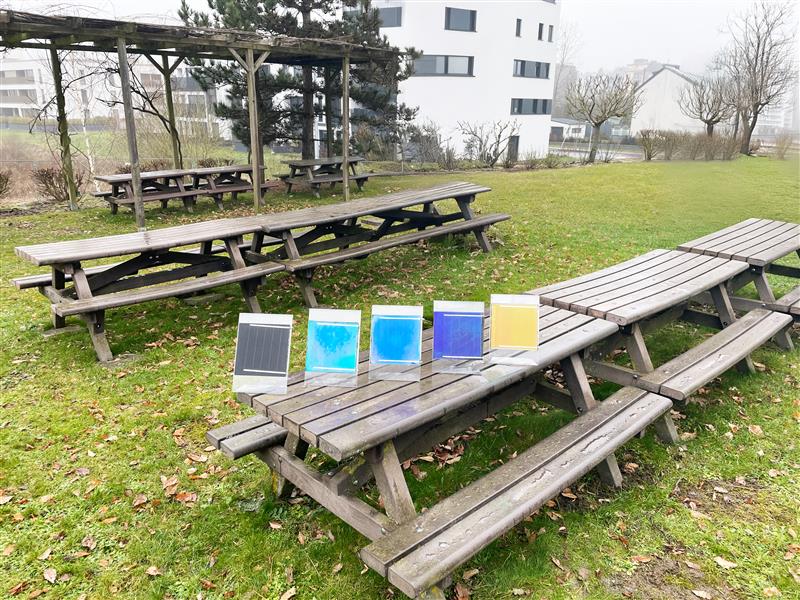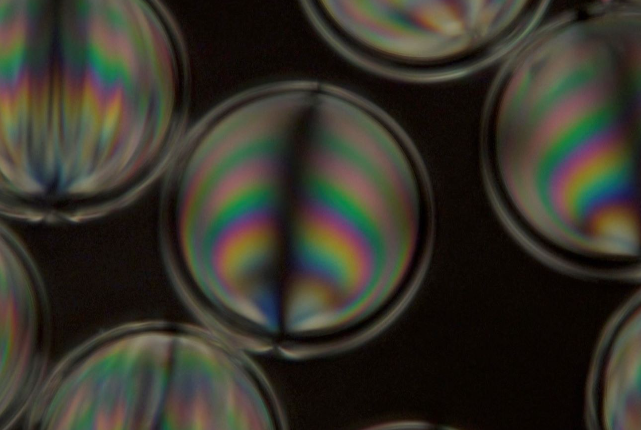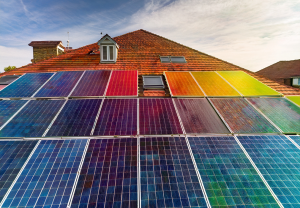LetzColor, a project from the University of Luxembourg, is on a mission to revolutionise how we perceive solar panels and energy. The project aims to seamlessly integrate solar technology into modern life by colouring solar cells to make them aesthetically pleasing and more publicly acceptable. This involves using cholesteric liquid crystals on solar cells to reflect colour and transmit light without significant power loss. The ultimate goal is to use these aesthetically enhanced photovoltaic (PV) panels as building elements that function as insulation and generate electricity, aligning with EU regulations for zero-emission buildings.
From lab experiment to market innovation
LetzColor’s journey, from a lab concept to a potential market disruptor, exemplifies innovative thinking and collaboration. It began with Lena Merges, a master’s student in Prof. Phillip Dale’s research group, who, in collaboration with Prof. Jan Lagerwall’s group, explored adding coloured liquid crystals to solar cells.
The project gained momentum when Dr. Hasan Arif Yetkin joined Prof. Dale’s team in 2022. Together with Dr. Yansong Zhang, they worked on adding cholesteric liquid crystals to solar modules on a larger scale, bringing them closer to commercial production. Their experiments yielded impressive results: a way to seamlessly blend solar technology with aesthetic demands. Dr. Yetkin explains that the liquid crystal adapts to the background, so “if it is a wooden background, you cannot differentiate from a certain distance that it is a solar cell”.

What makes LetzColor stand out?
First of all, it is versatility. Unlike other colouring methods that sacrifice efficiency or offer limited choices, LetzColor can deliver any colour in the rainbow with minimal power loss. Secondly, it is the method’s adaptability. Its pixelated design allows solar cells to mimic their surroundings, blending into various backgrounds. Finally, LetzColor’s approach promises efficiency. While ceramic inks can slash power output by up to 50%, this only reduces it by a mere 6-7%.
With two patents pending, the team envisions a future where solar panels are not an eyesore but an integral part of building design, contributing to both energy production and insulation. This aligns with upcoming EU regulations mandating zero-emission buildings, positioning LetzColor as a key player in the renewable energy transition.
Challenges remain, including scaling up production and perfecting the coating technology. However, collaborations are underway with research institutions and building-integrated PV manufacturers.
The next step involves conducting standard PV lifetime testing on modules with LetzColor colouring technology and securing pilot projects to showcase their technology and its real-world performance. By engaging with potential customers and partnering with local communities in Luxembourg, LetzColor aims to gather feedback and refine their product, thereby contributing to the development of a more sustainable future.
More information
Professor Philip Dale leads the Materials for a Sun-Powered Energy Transition (SPETRA) research group, and Professor Jan Lagerwall heads the Experimental Soft Matter Physics group—both within the Department of Physics and Material Science.
-

Materials for a Sun-Powered Energy Transition (SPETRA)
-

Experimental Soft Matter Physics
This project was funded by the FNR JUMP programme and supported by PaKTTO (Partnership, Knowledge & Technology Transfer Office at the University of Luxembourg).
